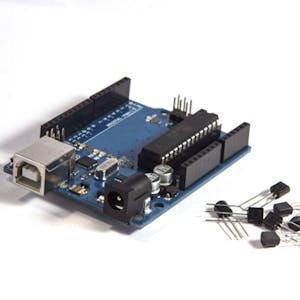Interfacing with the Arduino
About this Course
Arduino senses the environment by receiving inputs from add-on devices such as sensors, and can control the world around it by adjusting lights, motors, and other actuators. In this class you will learn how and when to use the different types of sensors and how to connect them to the Arduino. Since the external world uses continuous or analog signals and the hardware is digital you will learn how these signals are converted back-and-forth and how this must be considered as you program your device. You\'ll also learn about the use of Arduino-specific shields and the shields software libraries to interface with the real world. Please note that this course does not include discussion forums.Created by: University of California, Irvine

Related Online Courses
Unlock the power of AWS Amplify Studio to design visually stunning and fully functional user interfaces and backends. This course will guide you step-by-step, empowering you to build scalable web... more
This course in the Healthcare Marketplace specialization gives the learner an in-depth view of the intellectual property creation that is vital to creating breakthrough technologies. Included is an... more
Welcome to the Core Java - Design Patterns course! This course explores Java Design Patterns to deepen your understanding of software architecture. From structural to observer patterns, learners... more
The \"Security Basics for Artificial Intelligence Software and Services\" course provides an in-depth exploration of security measures and best practices in the context of AI. Spanning two... more
This Specialization will introduce non-native speakers of English to methods for developing English language and communication skills for the workplace, doing business, cross-cultural... more








